Nothing lasts forever, but my point is that there are some genres that are teflon when it comes to bombs, at least for a time. For that matter, most genres seem to produce their fair share of hits. After all, if a franchise or genre continues to fail, Hollywood would stop making those movies, right? But what about genres, specifically sub-genres, that don't seem to work for most movies and TV shows ... except for one franchise? Film and TV fans may not have much appetite for the specific sub-genre in general, but when it comes to one particular franchise, they just can't get enough. We're going to look at what those franchises are, and discuss why fans love them so. Whether it's box office, number of films, mainstream credibility, or simply good, old-fashioned fan enthusiasm, these are the franchises that dominate their specific movie and TV sub-genre.
9 Movie And TV Genres Dominated By One Franchise
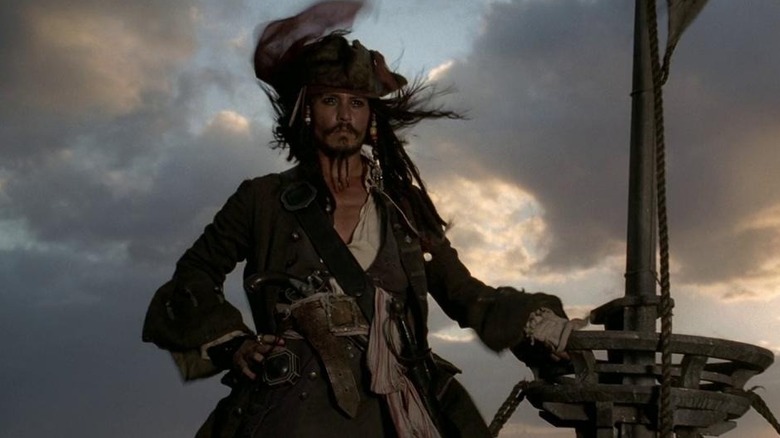
Walt Disney Pictures
Go back in time and making "Pirates of the Caribbean" sounds completely insane. Heck, it still sounds insane years late. Make a multi-million dollar movie based on a ride at Disneyland? Oh, and it stars Johnny Depp, whose string of box office bombs was barely buttressed by Tim Burton's "Sleepy Hollow," his only big hit in a sea of flops at $207 million worldwide? Oh, and it gets better, it's a pirate movie, a sub-genre whose most recent contribution to the culture was "Cutthroat Island," a legendary flop that sank an entire movie studio? Yep, sounds like a good idea (/sarcasm). Welp, turns out it was a great idea.
"Pirates of the Caribbean: The Curse of the Black Pearl" set sail in summer 2003, a season dominated by "Finding Nemo" and "Bruce Almighty," while action-adventure fans felt underwhelmed by "Hulk," "The Matrix Revolutions," and "T3: Rise of the Machines." Into the breach came "Pirates," whose solid if unspectacular $46 million opening was buoyed by strong word of mouth, sailing off into the sunset with an amazing $654 million worldwide, plus an Oscar nom for Depp. Turns out "Pirates" was just getting started. "Dead Man's Chest" set the box office opening weekend record, while the five-film franchise has gathered $4.5 billion in pirate's booty. The only pirate movie that comes close (relatively speaking) is Steven Spielberg's "Hook" with $300 million worldwide. Moviegoers don't like pirate movies; they like Captain Jack in "Pirates of the Caribbean."
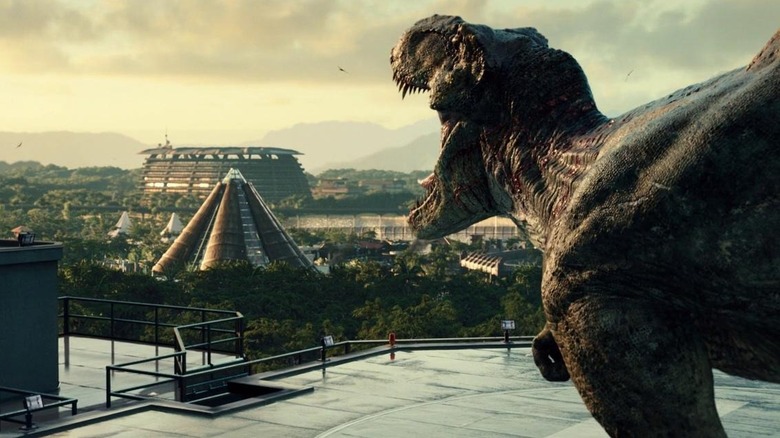
Universal Pictures
There's one thing everybody can agree on – dinosaurs are awesome! So why is it that dinosaurs aren't as big at the box office as superheroes? In fact, while there have been some successful dinosaur movies (e.g. "Ice Age: Dawn of the Dinosaurs" back in 2009), even the pre-pandemic Pixar bombed badly with "The Good Dinosaur." Meanwhile, every "Jurassic Park/Jurassic World" movie has made bank. Yes, even "Jurassic Park III." Heck, the franchise has even broken the opening-weekend record three times ("Jurassic Park," "The Lost World: Jurassic Park," "Jurassic World"), tied with "The Avengers," and behind only "Batman" with four. Even the downright dreadful "Dominion" made a billion dollars. What gives?
I believe it's because most dinosaur movies stop at "hey, aren't dinosaurs cool?" But our bond goes deeper than that. We fell in love with the ancient reptiles while nestled in the comfort of childhood, and the titans still manage to make our tired, old eyes glisten with glee. So naturally, the only filmmaker who has capitalized on their box office potential is a "big kid" himself, Steven Spielberg. Sure, Spielberg only directed the first two "Jurassic Park" movies, but he has served as a hands-on producer for the entire franchise, and its style still bears his cinematic stamp (or should I say "footprint?"). Dinosaurs are sweet, yes, but they're also exciting, terrifying, and awe-inspiring, emotions the "Jurassic" franchise at its best continues to conjure. Also, John Williams' tunes are pretty darn hummable too.

Warner Brothers
Despite the original 1954 "Godzilla" being a monster movie masterpiece, "Godzilla Minus One" was the first Godzilla movie in 70 years to even be nominated for an Academy Award (for Best Visual Effects), let alone win one. Meanwhile, the "King Kong" franchise has only been nominated for technical awards, despite the 1933 original being one of the best American movies ever. Thing is, while unapologetic kaiju addicts (aka man children) like myself love nothing more than watching two kaiju throw claws, many moviegoers tend to consider the genre a little lowbrow. But hey, so what? Lots of genres ain't exactly Shakespeare, but still manage to make money. Ay, but there's the rub; most giant monster movies don't make much money, except Godzilla and Kong.
"Pacific Rim" was fun, but if not for China, we never would have gotten a "Pacific Rim: Uprising." Back in 2008, "Cloverfield" opened huge, but collapsed in its second weekend. Heck, even the Kong-less "Godzilla: King of the Monsters" in 2019 probably would have stomped the series flat if "Godzilla vs. Kong" wasn't already in production. But that film helped save the post-pandemic box office in 2021, while its sequel "Godzilla x Kong: The New Empire" became the series-high watermark. With $2.5 billion total and a half-a-billion average at the box office, the Monsterverse is one of the few successful non-Marvel cinematic universes. Turns out Godzilla and Kong are the only cinematic duo that dominates the giant monster sub-genre.
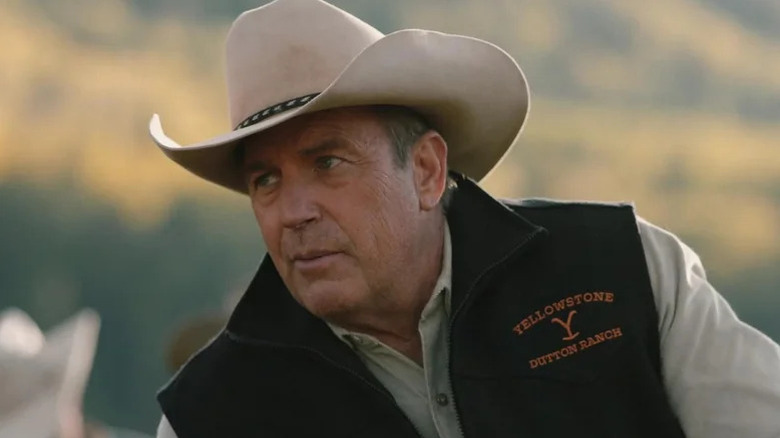
Paramount
"When the fact becomes legend, print the legend" from "The Man Who Shot Liberty Valance" pretty much describes the American western, a genre whose influence goes far beyond the screen, as it has helped establish the American myth and our shared cultural identity, for better or worse. The genre has been revived, revised, defined, redefined, and declared dead dozens of times before anybody reading this was ever born, yet it refuses to ride off into the sunset. Despite its cultural footprint, westerns haven't made bank at the box officefor a while. Disney and Johnny Depp failed to bring that "Pirates" magic to the "The Lone Ranger" in 2012. That same year saw the genre's biggest hit (unadjusted for inflation) – "Django Unchained" – but that takes place in the Old South, not the Old West.
While westerns are underwhelming on the big screen, one "modern western" is sizzling on the small screen: Taylor Sheridan's "Sheridan-Verse." "Yellowstone" and pals "1883" and "1923" are so popular that streamers like Peacock and Paramount+ depend on them, while characters like John and Beth Dutton are household names even to non-fans. Given Kevin Costner's would-be "Horizon" series failed out of the gate, it's clearly not "Costner Western" that mints money, but the Sheridan-Verse. Why? While most westerns either deify or demonize the Old West, the Sheridan-Verse succeeds because it shows the "modern west" for what it is; a place of contemporary contradictions, but motivated by timeless human emotions.
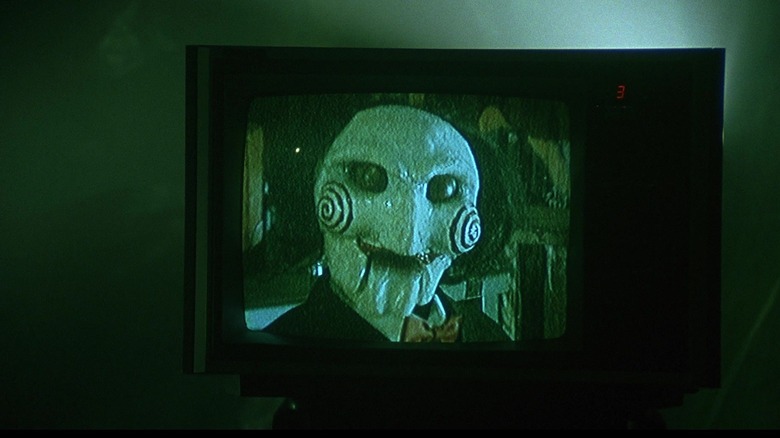
Lionsgate
If stories allow us to reveal and revel in our subconscious fantasies, what does that say about the horror sub-genre, torture porn/splatter films? Sure, being scared in a safe space helps build resilience, and is actually good for your mental health. But torture porn straddles the fence between scary and sadistic; does our enjoyment come from testing our grit for onscreen gore ... or from watching people get hurt, like a more gruesome version of "America's Funniest Home Videos?" Maybe both? At least torture porn's gore is usually outlandishly cartoonish, and the sub-genre's popularity primarily comes from the "Saw" franchise.
Yes, the "Terrifier" series has steadily built an audience, but thanks to Art the Clown those films could also be considered Slasher Pics. Besides, that franchise's biggest hit may have surprised the industry, but fell short of "Saw" at its peak popularity. For a solid seven years, "Saw" was an annual Halloween tradition. While FOMO contributed to its popularity, I mostly credit Jigsaw. While some villains indiscriminately kill for pure pleasure (e.g. Art), Jigsaw's philosophy drove deeper than a knife. He wanted to prove a point, and concocted "games" to test his victim's character. In this way, he belongs to the same breed of bad guy as John Doe from "Seven," Anton Chigurh in "No Country For Old Men," and The Joker from "The Dark Knight." Go past the gore, and "Saw" succeeds because it has a message beyond mutilation.
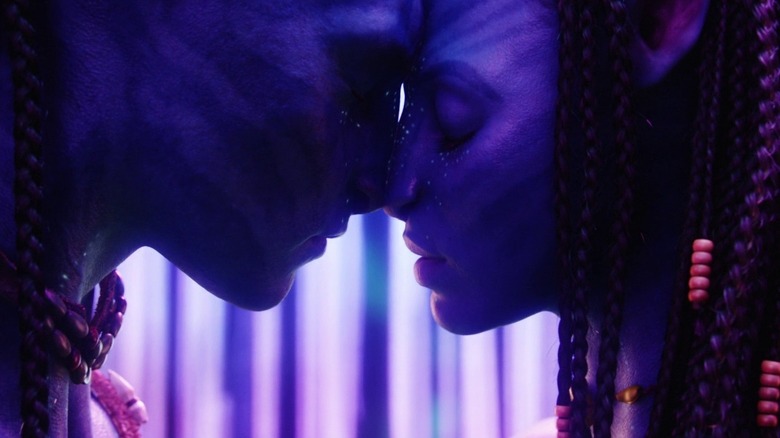
20th Century Studios
Much digital ink has been spilled arguing about the cultural footprint of James Cameron's "Avatar." On the one hand, few fans seem to cherish the series with the same esteem as "Star Wars," or even "Star Trek." On the other hand, $5.2 billion for two movies ($2.6 billion average) is quite the trump card, as is "Avatar" being the highest-grossing movie all time by a comfy $200 million. On the other other hand, some have suggested that "Avatar" dominates the box office because it has no cultural footprint; i.e. the movies make money because it's solely a cinematic franchise, and fans can't get their "'Avatar' fix" from cartoons, spin-offs, etc.
Perhaps a point for the cultural footprint column is that Avatar dominates not one, not two, but three cinematic sub-genres: 3D, environmental, and original sci-fi. While "Avatar" was supposed to signal 3D's box office supremacy, it was largely a fad led solely by "Avatar." Moviegoers may love fresh air and clear skies, but besides the occasional "WALL-E," the only environmental series seeing major green is "Avatar." And while people may pine for original sci-fi, the box office belongs to sequels, as fresh ideas from "visionary directors" either fail to launch (The Wachowskis' "Jupiter Ascending;" Gareth Edwards' "The Creator"), or stay on streaming (Zach Snyder's "Rebel Moon"). Debate the cultural staying power of "Avatar" all you want, but there's no denying its dominance across these three sub-genres (or every genre for that matter).
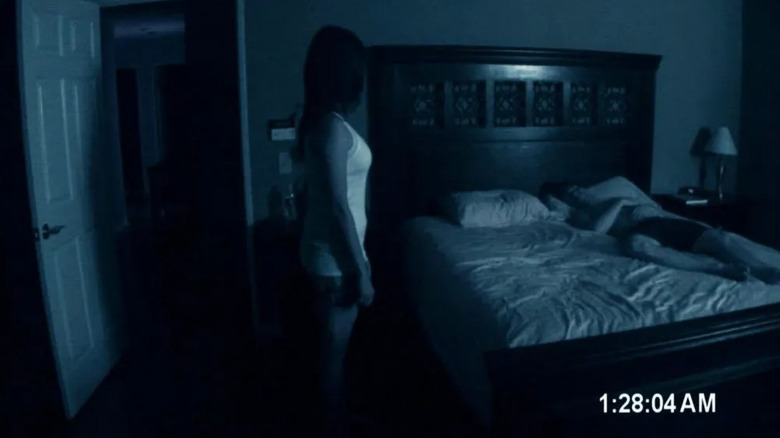
Paramount Pictures
The horror genre is never better than when it convinces us that what we are watching could really happen. The found footage horror sub-genre goes one step further, by making it seem like the horror story unfolding before us actually did happen. By using documentary storytelling techniques, found footage horror movies blur the line between fantasy and fiction to convey a heightened sense of cinematic verisimilitude. Sure, this can get pretty convoluted, even for a horror movie. While we're used to yelling at the movie characters to "just get out of the house!," with found footage movies we're also wondering why they don't just drop the damn camera already.
Despite featuring shaky camera work, the found footage genre has a steady record at the box office. Alas, most success stories are one and done, as the novelty has worn off by the sequel. "The Blair Witch Project" remains the sub-genre's peak, but its two sequels failed to conjure the same magic. Ditto for "Cloverfield," whose sequels chose conventional storytelling over found footage. The only franchise to dominate the sub-genre is "Paranormal Activity," whose seven films have earned nearly one billion worldwide, despite costing less than the catering budget on a Marvel movie. I suspect it's because their other sub-genre — supernatural ghost story — lends itself so well to the found footage style. Witch covens and alien kaiju don't exactly hit close to home, but an evil spirit haunting your bedroom is always nightmare fuel.
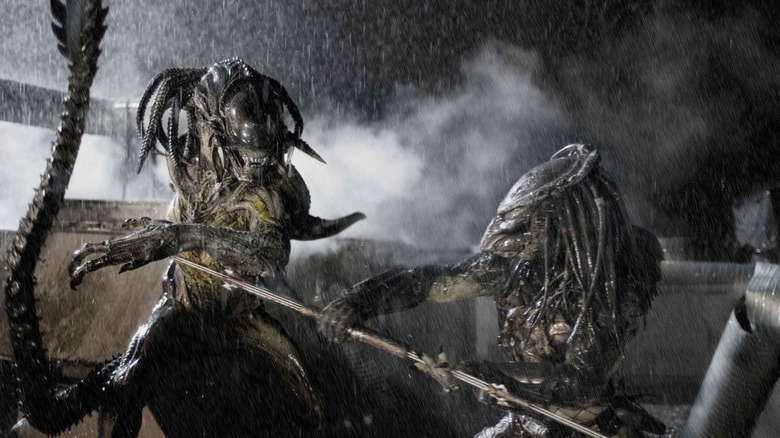
20th Century Studios
When the U.S. military finally acknowledged the existence of mysterious U.F.O. phenomena after more than half-a-century of denials, it was met with a collective "Yes, and?" Perhaps the potential for aliens being real wasn't that surprising given we have been primed for it by movie and TV shows since the 1950s. And we're not just talking about niche entertainment either. Steven Spielberg's "E.T. The Extra-Terrestrial" was the highest-grossing movie of all time for a time, while "Independence Day" was the biggest worldwide hit of 1996 by over $300 million. Yet "E.T." never got a sequel (and I'm so grateful for that), while "Independence Day: Resurgence" earned less than half what its predecessor made 20 years earlier.
For an alien creature feature franchise that continues to thrive, there's really only one. Well, two-ish: The "Alien" and "Predator" cinematic universe. The "Alien" series proved in space nobody could hear you scream in 1979, and has screamed up $1.9 billion over nearly 50 years. With $741 million, the "Predator" series is no slouch either, with streaming shows and movies on the forefront. Plus, there's the $300 million worldwide earned collectively by the monster's two cinematic showdowns in 2004 and 2007. We credit the characters. Not just all-timer human ones like Sigourney Weaver's Ripley ("Alien") and Arnold Schwarzenegger's Dutch ("Predator"), but especially the monsters themselves. From their inspired designs, to their terrifying personas, moviegoers can't seem to get enough of the Xenomorphs and Yautja.
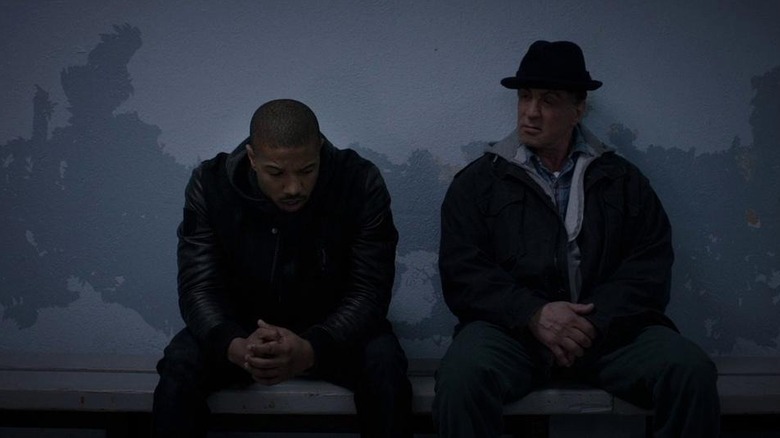
Warner Brothers
There have been boxing movies for as long as there have been movies because there's just something inherently cinematic about two dudes throwing hands in the squared circle. But while "Raging Bull" is the best boxing movie (and sports movie, period), there's only one boxing franchise that remains the undisputed champ: the "Rocky" and "Creed" films. Part of that is because most boxing movies don't set out to be a series (though a "Raging Bull 2" would be ... interesting). But it's also because the "Rocky" and "Creed" movies make so much money. Just shy of $2 billion worldwide across nine films, which is even more impressive when you take inflation into account.
For example, "Rocky" topped the box office with $225 million ($1.2 billion adjusted) in 1976 and won Best Picture in 1977. Less than ten years later "Rocky IV" had our hero win the Cold War, and earn a franchise high of $300 million. But when series creator and star Sylvester Stallone hung up his gloves with 2006's "Rocky Balboa," Ryan Coogler stepped in with "Creed" in 2015. "Creed III" was directed by star Michael B. Jordan, and earned a series-high $156 million domestic, and $276 million worldwide, second only to "Rocky IV" (not accounting for inflation). The reason for their success is simple: moviegoers love rooting for Rocky Balboa and Adonis Creed. When it comes to dominating the boxing sub-genre, the "Rocky" and "Creed" franchise has the eye of the tiger.











